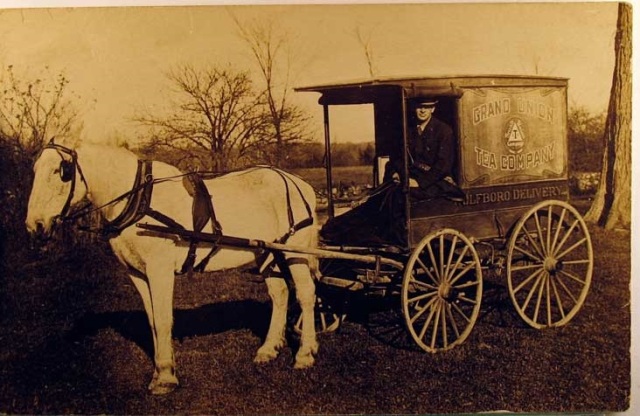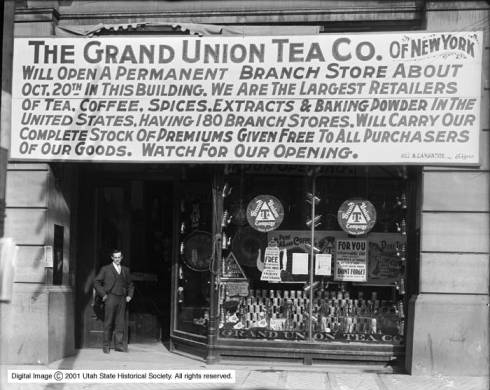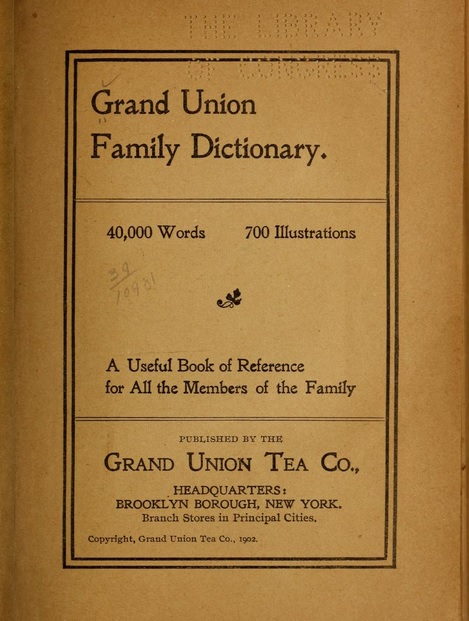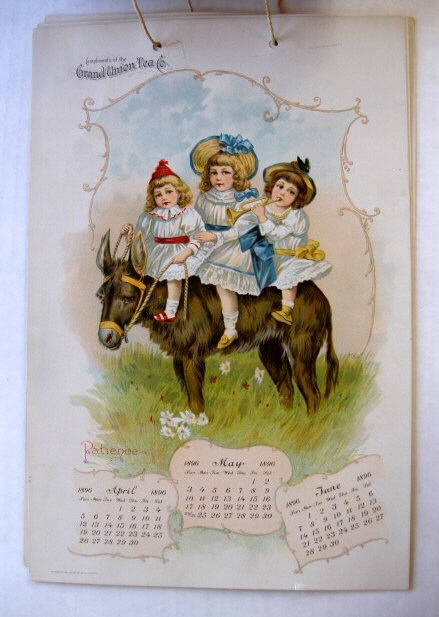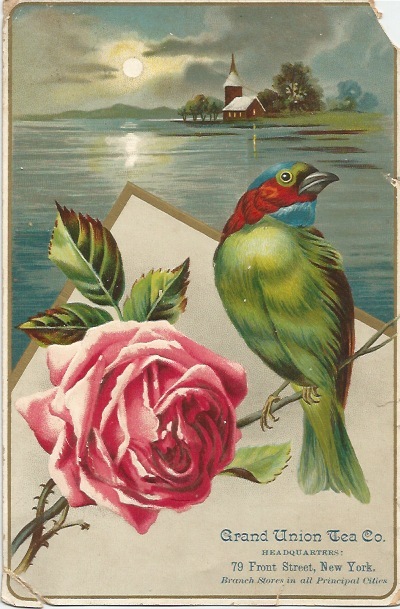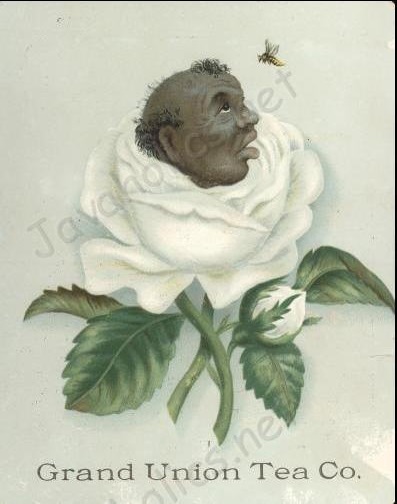- Antique, crica 1890s
- Embossed
- Cool Triangle logo
- New York!
- Overall nice and bright/shiny
- Please see the small scuff marks on the upper, left, shoulder
- Newer, replacement, cork
- Very very tiny chip to the lip (could easily be sanded off and no one would be none the wiser).
- 5" T
Starting out as a small business selling coffee, tea, spices, baking powder, and flavoring extracts in the 1870s, The Grand Union Tea Company grew successfully into a national brand by the mid 20th century before suffering setbacks, struggles and eventual decline. The company helped spur the growth of the supermarket and discount stores which are so familiar to us today.
The Grand Union Tea Company was an innovative company that thrived in the late 19th and first half of the 20th century.
“Cyrus, Frank, and Charles Jones founded what was to become Grand Union in 1872. They called the business the Jones Brothers Tea Co., starting with one store in Scranton, Pennsylvania, where the shelves were stocked with coffee, tea, spices, baking powder, and flavoring extracts. The brothers expanded the business steadily, branching out with new stores in eastern Pennsylvania, Michigan, and New York. By the time it built its headquarters and warehouse in Brooklyn, New York, the company was known as the Grand Union Tea Co.
In 1912 Grand Union was a 200-outlet chain store with operations across the country. In addition to its business establishments, the company supported a small army of 5,000 door-to-door salesmen and delivered goods in horse-drawn wagons. The brothers incorporated the Jones Brothers Tea Co. in 1916. Grand Union used its financial strength through the 1920s to acquire other food businesses, including Progressive Grocery Stores, the Union Pacific Tea Co., and Glenwood stores. After merging with the Oneida County Creameries Co. in 1928, the Jones brothers reincorporated under the Grand Union name. During the 1930s Grand Union grew to be one of the country’s most thriving food chains. In 1931 the company had 708 small stores and $35 million in sales.
The next decade saw the development of the “supermarket” concept. The idea was to house a range of groceries, including meat, dairy products, and inedible packaged goods, under one roof. When Lansing P. Shield took over as Grand Union president in the early 1940s, he embraced the supermarket format and plunged the company forward into a new era of food marketing. Grand Union was one of the first companies to utilize the format. Shield helped evolve the supermarket concept by demanding that the spacious supermarkets be designed carefully so as not to overwhelm customers used to smaller shops. Shield suggested breaking down the open spaces by building more walls and dispersing special product displays throughout the aisles. By the mid-1950s, Grand Union operated about half the number of stores it did in the 1930s, but the stores turned out nearly seven times the volume of sales.
When grocery stores became involved in the discounting business, Grand Union was again one of the first in the food business to welcome the idea. The first Grand Union general merchandise discount store, called Grand Way, opened in 1956 in Keansburg, New Jersey. After the Keansburg store proved a success, the company opened another in Albany, New York. By 1962 Grand Union was operating 21 discount stores. To keep the stores running smoothly, Chairman Thomas Butler hired Joseph L. Eckhouse, formerly the head of the Gimbel Bros. department store in New York, to oversee them. Eckhouse envisioned the Grand Way stores as a place to buy quality goods and fashionable clothing at lower prices than department stores. Eckhouse died, however, before his vision could be fully realized.”
Sadly, in the second half of the 20th century, the company struggled and declined, losing money and twice entering into bankruptcy protection. While it’s still around today, it no longer has the impressive coverage and diverse offerings it once boasted.
Like many turn of the century companies, Grand Union advertised its business by publishing numerous popular books, recipe booklets, calendars and trading cards. Aside from its store locations, it also used door to door sales methods to reach its customers.

